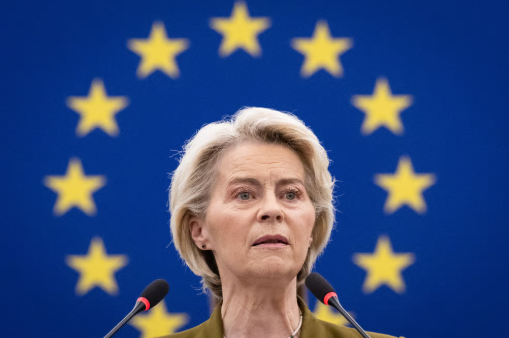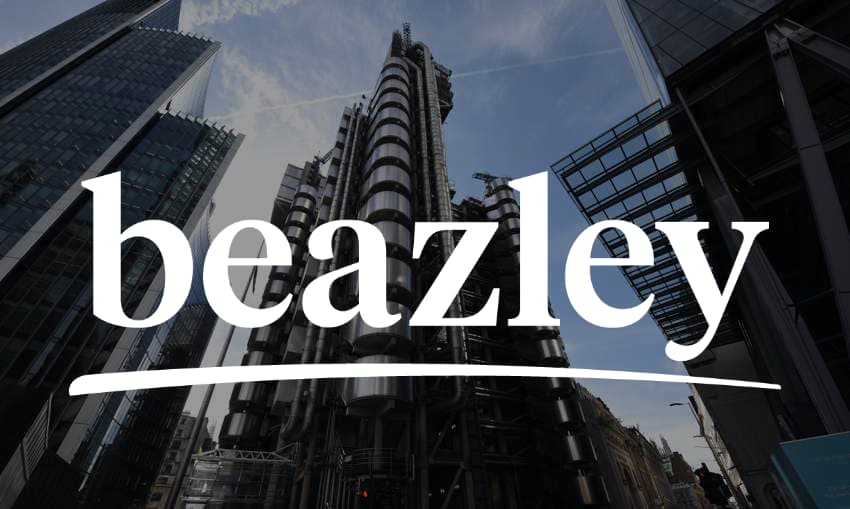Few books about the history of the Federal Reserve contain the number of insights found in Robert Hetzel’s The Federal Reserve: A New History. Hetzel does not merely recount historical events related to America’s central bank, as so many other books have done. Instead, he draws on his considerable knowledge of economic theory and intellectual history to systematically analyze the sources of monetary disorder and the policies necessary to promote monetary stability.
At its core, Hetzel’s analysis identifies the various monetary standards that have been in operation throughout the Fed’s existence, explains how those standards have affected the economy, for better or worse, and considers how we might use our understanding of this history to make money mischief a thing of the past.
A monetary standard refers to the institutions and rules that determine monetary policy. As Hetzel explains, uncovering the nature of a particular monetary standard and how it has evolved requires a structural model of the economy and a description of how the Fed responds to new information about the economy, given its objective. In other words, we need a way of separating the Fed’s influence on the economy from the economy’s influence on the Fed’s actions.
The challenge is that monetary policy and the factors that determine real (i.e., inflation-adjusted) variables like employment and output are not strictly independent of one another. Hetzel deals with this challenge by crafting an analytic narrative that combines contemporaneous documentary evidence with the state of knowledge among Fed officials to reconstruct the Fed’s reaction function—a description of how the Fed responds to incoming information about the economy. This approach allows Hetzel to illustrate how the Fed’s reaction function has evolved, yielding insights into the ideal monetary standard. Hetzel’s primary takeaway is that the price system can deliver economic stability when the Fed follows policies that ensure the price level evolves predictably. When the Fed fails to anchor people’s expectations about the behavior of the price level, however, the monetary system becomes a source of economic instability.
Hetzel contends that Fed officials have often contributed to economic instability by maintaining the central bank’s policy interest rate (e.g., the federal funds rate) at too high a level for too long and vice versa, resulting in unnecessary economic volatility. On the other hand, Hetzel argues that there have also been times when Fed officials were willing to preemptively adjust the policy rate to keep the economy on a sustainable growth path, minimizing monetary disturbances.
To understand Hetzel’s approach, it is necessary to distinguish between three different interest rates. The first is the real interest rate, which is determined by the supply and demand for loanable funds. The second is the nominal interest rate, which equals the real interest rate plus expected inflation. We can safely assume that, in the long run, the real rate is outside the Fed’s control. In the short run, however, inflation expectations do not adjust instantaneously to changes in monetary policy and so the Fed can raise or lower the real interest rate temporarily.
The third rate is the natural rate of interest. This rate coordinates the economy’s intertemporal structure, allocating scarce resources between current and future uses. If the real rate equals the natural rate, the operation of the price system ensures the economy grows at a sustainable rate. Since the Fed can influence the real rate in the short run, monetary policy can drive a wedge between the real and natural rates.Consider a case where the natural rate falls due to declining productivity. Suppose the Fed does not cut its policy rate. As a result, the real rate exceeds the natural rate. This wedge will cause total dollar expenditure in the economy to decline. If wages do not adjust instantly, real wages will increase, leading to declining employment and output in the short run. In this case, the Fed’s response amplifies the productivity-driven downturn, making monetary policy pro-cyclical.
This example illustrates Hetzel’s contention that the ideal monetary standard ensures the real interest rate tracks the natural rate. To be fair, implementing the ideal monetary standard is easier said than done. Nonetheless, Hetzel convincingly argues that there have been times throughout the Fed’s existence when the existing monetary standard has approximated the ideal. Unsurprisingly, it was during those times that we observed relative economic stability.Before the Fed gained its nominal independence with the Fed-Treasury Accord in 1951, Hetzel argues that Fed officials, on the whole, lacked a coherent theory of how changes in monetary policy affected the economy. They did not understand how their actions could drive a wedge between real and natural interest rates. As a result, the Fed’s monetary policy before the Accord was rarely stabilizing.Hetzel explains that after the Fed-Treasury accord, William McChesney Martin, the Chairman of the Board of Governors from 1951 to 1970, sought to reintroduce the Fed’s stabilization policies from the 1920s but with a different emphasis. During the 1920s, the focus was on preventing speculative asset bubbles. Instead of preventing speculative asset bubbles, Martin saw the Fed’s job as ensuring that the economy remained on a sustainable growth path to ensure price stability.
Martin’s means of achieving this goal involved keeping the Fed’s policy rate aligned with the natural rate. Hetzel calls this approach Lean-Against-the-Wind (LAW). Suppose there is a sustained increase in employment or economic growth. In that case, LAW stipulates that Fed officials should raise the central bank’s policy rate. In other words, the Fed can prevent monetary policy from destabilizing the economy if the policy rate tracks the natural interest rate.Hetzel argues that, at various times, Fed officials have followed two variants of the LAW approach. The first Hetzel describes as LAW with Credibility. Under this variant, the Fed preemptively adjusts the policy rate rather than waiting for inflation to increase. Doing so, Hetzel explains, establishes a credible nominal anchor, thereby turning over to the price system responsibility for determining employment and output.
The second variant Hetzel calls LAW with Tradeoffs. Under this variant, the Fed waits to adjust its policy rate until there is a sustained increase in inflation or unemployment. As Hetzel shows, this approach made monetary policy procyclical, as it involved keeping the policy rate either too high or too low relative to the natural rate. Thus, monetary policy under LAW with Tradeoffs amplified the business cycle.
Throughout the 1950s and early 1960s, the Fed, under Martin’s leadership, followed LAW with Credibility. As Hetzel explains, this strategy reflected Martin’s view that monetary policy should keep output growing at its potential rate, which would promote price stability. The Fed did so by looking at interest rate spreads in the bond market for signs of incipient inflation and adjusting its policy rate accordingly. As a result, inflation was relatively low during this period.Despite the initial success of LAW with Credibility, by the end of Martin’s tenure in 1970, inflation was 5 percent, owing, Hetzel argues, to the switch from LAW with Credibility to LAW with Tradeoffs. According to Hetzel, the change occurred because Martin could not articulate why LAW with Credibility was the preferable reaction function and was unable to stand up to political pressure from Congress and the Johnson Administration for accommodative monetary policy.The move to LAW with Tradeoffs in the late 1960s under Martin’s leadership continued throughout the 1970s under Arthur Burns and G. William Miller. As Hetzel explains, the consensus at the time was that the unemployment rate consistent with full employment was four percent, and it was socially desirable for the government to ensure that the unemployment rate was at least that low.
Implicit in this view was the belief that the price system alone would not ensure full employment. Thus, monetary and fiscal policy would be necessary to reduce unemployment. As Hetzel explains, Burns was not a Keynesian but shared their belief that there was a permanently exploitable tradeoff between inflation and unemployment known as the Phillips curve, which offered policymakers a menu of inflation-unemployment policy options from which to choose.
Burns also shared the Keynesian view that inflation was primarily non-monetary, driven instead by monopolists and labor unions. According to Hetzel, Burns believed these organizations would use their market power to increase wages and prices. While the Fed could offset this effect with restrictive monetary policy, the Phillips curve meant that doing so would come at the expense of higher unemployment.
The LAW with Tradeoffs framework became unworkable as time passed. During this period, Hetzel argues, the Fed’s efforts to lower inflation by keeping the policy rate high relative to the natural rate and thereby reduce output and employment became ineffective because the public expected the Fed would soon reverse course. In other words, the Fed lost credibility. As a result, LAW with Tradeoffs produced high inflation and unemployment.
Hetzel argues that the failure of LAW with Tradeoffs and the theoretical advances in economics that occurred in response to this failure cleared the way for the return of LAW with Credibility during the Volcker-Greenspan era, a period of time known as the Great Moderation. During the Great Moderation, Fed officials understood that they were responsible for managing the public’s inflation expectations and that the price system would ensure economic stability if they did so effectively.
The Great Moderation ended in 2007 with the onset of the Great Recession, when Hetzel argues the Fed fell back into its old ways by keeping the policy rate too high relative to the natural rate. Hetzel contends that Fed officials did so because they were too focused on headline inflation and did not believe that a negative real interest rate was consistent with contractionary monetary policy. As a result, monetary policy was too restrictive.As the economy recovered from the Great Recession, inflation and unemployment fell. Before the pandemic, the unemployment rate was 3.5 percent despite the inflation rate remaining below the Fed’s two percent target. Fed officials responded to this fact by abandoning LAW with Credibility. Influenced by the Phillips curve view, they opted to forego preemptive policy rate increases, allowing inflation and employment to increase.In Hetzel’s view, Fed officials learned the wrong lessons from the Great Recession. He argues that monetary policy was on track during the years following the Great Recession, which explains why inflation and the unemployment rate were historically low. In other words, the price system worked exceptionally well precisely because the Fed had successfully established a credible nominal anchor. As a result, the economy could sustain a historically low unemployment rate.
Hetzel blames the Fed’s mistaken interpretation of the recovery from the Great Recession and subsequent abandoning of LAW with Credibility for the past two years of high inflation. Rather than preemptively raise its policy rate as the economy recovered from the pandemic, the Fed kept its policy rate too low relative to the natural rate, and, as a result, inflation increased to a level not seen in 40 years.
According to Hetzel, the Fed has gone back and forth between LAW with Credibility and LAW with Tradeoffs since the Fed-Treasury Accord. Hetzel’s evidence suggests LAW with Credibility is the superior strategy. When the Fed has followed some version of this strategy, inflation has been low and the economy stable. The opposite occurred when the Fed deviated from this strategy.
Hetzel’s book could not have come at a more opportune time. His historical and theoretical analysis of the Fed’s history provides critical insights that could aid Fed officials in reviewing their monetary policy framework next year. Let us hope they take Hetzel’s analysis seriously. Otherwise, they will continue to make the same mistakes they always have, and we will pay the price.







































